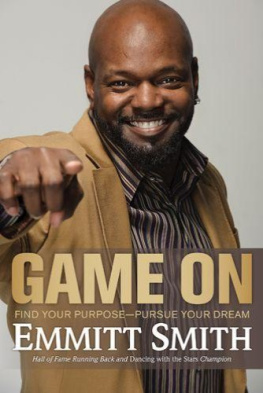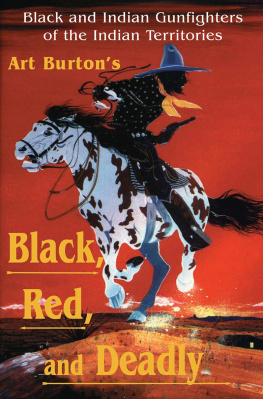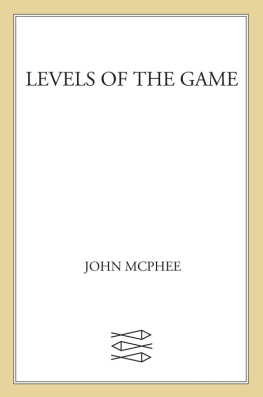Arthur Smith (1870–1929) - The game of go: The national game of Japan
Here you can read online Arthur Smith (1870–1929) - The game of go: The national game of Japan full text of the book (entire story) in english for free. Download pdf and epub, get meaning, cover and reviews about this ebook. year: 2021, publisher: Project Gutenberg, Urbana, Illinois, USA., genre: Children. Description of the work, (preface) as well as reviews are available. Best literature library LitArk.com created for fans of good reading and offers a wide selection of genres:
Romance novel
Science fiction
Adventure
Detective
Science
History
Home and family
Prose
Art
Politics
Computer
Non-fiction
Religion
Business
Children
Humor
Choose a favorite category and find really read worthwhile books. Enjoy immersion in the world of imagination, feel the emotions of the characters or learn something new for yourself, make an fascinating discovery.
- Book:The game of go: The national game of Japan
- Author:
- Publisher:Project Gutenberg, Urbana, Illinois, USA.
- Genre:
- Year:2021
- Rating:4 / 5
- Favourites:Add to favourites
- Your mark:
- 80
- 1
- 2
- 3
- 4
- 5
The game of go: The national game of Japan: summary, description and annotation
We offer to read an annotation, description, summary or preface (depends on what the author of the book "The game of go: The national game of Japan" wrote himself). If you haven't found the necessary information about the book — write in the comments, we will try to find it.
The game of go: The national game of Japan — read online for free the complete book (whole text) full work
Below is the text of the book, divided by pages. System saving the place of the last page read, allows you to conveniently read the book "The game of go: The national game of Japan" online for free, without having to search again every time where you left off. Put a bookmark, and you can go to the page where you finished reading at any time.
Font size:
Interval:
Bookmark:

THE GAME OF GO

Sato Tadanobu, a Samurai of the Twelfth Century, Defending Himself with a Goban, when Attacked by His Enemies.
From a print by Kuniyoshi.
(page 5)
NATIONAL GAME OF JAPAN
ARTHUR SMITH
MOFFAT, YARD & COMPANY
1908
Copyright, 1908
BY
ARTHUR SMITH
NEW YORK
All rights reserved
Published, July, 1908
The Plimpton Press Norwood Mass. U.S.A.
This book is intended as a practical guide to the game of Go. It is especially designed to assist students of the game who have acquired a smattering of it in some way and who wish to investigate it further at their leisure.
As far as I know there is no work in the English language on the game of Go as played in Japan. There is an article on the Chinese game by Z. Volpicelli, in Vol. XXVI of the Journal of the China Branch of the Royal Asiatic Society. This article I have not consulted. There is also a short description of the Japanese game in a work on Korean Games with Notes on the Corresponding Games of China and Japan, by Stewart Culin, but this description would be of little practical use in learning to play the game.
There is, however, an exhaustive treatise on the game in German by O. Korschelt. This can be found in Parts 2124 of the Mittheilungen der deutschen Gesellschaft fr Natur- und Vlkerkunde Ostasiens. The student could readily learn the game from Herr Korschelts article if it were available, but his work has not been translated, and it is obtainable only in a few libraries in this country. In the preparation of this book I have borrowed freely from Herr Korschelts work, especially in the chapter devoted to the history of the game, and I have also adopted many of his illustrative games and problems.
Herr Korschelt was an excellent player, and acquired his knowledge of the game from Murase Shuho, who was the best player in Japan at the time his article was written (about 1880).
My acquaintance with the game has been acquired from Mr. Mokichi Nakamura, a Japanese resident of this country, who is an excellent player, and whose enthusiasm for the game led me to attempt this book. Mr. Nakamura has also supplied much of the material which I have used in it. Toward the end I have had the expert assistance of Mr. Jihei Hashiguchi, with whom readers of the New York Sun are already acquainted.
Wherever possible I have given the Japanese words and phrases which are used in playing the game, and for those who are not familiar with the system of writing Japanese with Roman characters, I may say that the consonants have the sounds used in English, and the vowels the sounds that are used in Italian, all the final vowels being sounded. Thus, dame is pronounced as though spelled dahmay.
New York , April, 1908.
The game of Go belongs to the class of games of which our Chess, though very dissimilar, is an example. It is played on a board, and is a game of pure skill, into which the element of chance does not enter; moreover, it is an exceedingly difficult game to learn, and no one can expect to acquire the most superficial knowledge of it without many hours of hard work. It is said in Japan that a player with ordinary aptitude for the game would have to play ten thousand games in order to attain professional rank of the lowest degree. When we think that it would take twenty-seven years to play ten thousand games at the rate of one game per day, we can get some idea of the Japanese estimate of its difficulty. The difficulty of the game and the remarkable amount of time and labor which it is necessary to expend in order to become even a moderately good player, are the reasons why Go has not spread to other countries since Japan has been opened to foreign intercourse. For the same reasons few foreigners who live there have become familiar with it.
On the other hand, its intense interest is attested by the following saying of the Japanese: Go uchi wa oya no shini me ni mo awanu , which means that a man playing the game would not leave off even to be present at the death-bed of a parent. I have found that beginners in this country to whom I have shown the game always seem to find it interesting, although so far I have known no one who has progressed beyond the novice stage. The more it is played the more its beauties and opportunities for skill become apparent, and it may be unhesitatingly recommended to that part of the community, however small it may be, for whom games requiring skill and patience have an attraction.
It is natural to compare it with our Chess, and it may safely be said that Go has nothing to fear from the comparison. Indeed, it is not too much to say that it presents even greater opportunities for foresight and keen analysis.
The Japanese also play Chess, which they call Shogi, but it is slightly different from our Chess, and their game has not been so well developed.
Go, on the other hand, has been zealously played and scientifically developed for centuries, and as will appear more at length in the chapter on the History of the Game, it has, during part of this time, been recognized and fostered by the government. Until recently a systematic treatment of the game, such as we are accustomed to in our books on Chess, has been lacking in Japan. A copious literature had been produced, but it consisted mostly of collections of illustrative and annotated games, and the Go masters seem to have had a desire to make their marginal annotations as brief as possible, in order to compel the beginner to go to the master for instruction and to learn the game only by hard practice.
Chess and Go are both in a sense military games, but the military tactics that are represented in Chess are of a past age, in which the king himself entered the conflicthis fall generally meaning the loss of the battleand in which the victory or defeat was brought about by the courage of single noblemen rather than through the fighting of the common soldiers.
Go, on the other hand, is not merely a picture of a single battle like Chess, but of a whole campaign of a modern kind, in which the strategical movements of the masses in the end decide the victory. Battles occur in various parts of the board, and sometimes several are going on at the same time. Strong positions are besieged and captured, and whole armies are cut off from their line of communications and are taken prisoners unless they can fortify themselves in impregnable positions, and a far-reaching strategy alone assures the victory.
It is difficult to say which of the two games gives more pleasure. The combinations in Go suffer in comparison with those of Chess by reason of a certain monotony, because there are no pieces having different movements, and because the stones are not moved again after once being placed on the board. Also to a beginner the play, especially in the beginning of the game, seems vague; there are so many points on which the stones may be played, and the amount of territory obtainable by one move or the other seems hopelessly indefinite. This objection is more apparent than real, and as ones knowledge of the game grows, it becomes apparent that the first stones must be played with great care, and that there are certain definite, advantageous positions, which limit the player in his choice of moves, just as the recognized Chess openings guide our play in that game. Stones so played in the opening are called Joseki by the Japanese. Nevertheless, I think that in the early part of the game the play is somewhat indefinite for any player of ordinary skill. On the other hand, these considerations are balanced by the greater number of combinations and by the greater number of places on the board where conflicts take place. As a rule it may be said that two average players of about equal strength will find more pleasure in Go than in Chess, for in Chess it is almost certain that the first of two such players who loses a piece will lose the game, and further play is mostly an unsuccessful struggle against certain defeat. In Go, on the other hand, a severe loss does not by any means entail the loss of the game, for the player temporarily worsted can betake himself to another portion of the field where, for the most part unaffected by the reverse already suffered, he may gain a compensating advantage.
Font size:
Interval:
Bookmark:
Similar books «The game of go: The national game of Japan»
Look at similar books to The game of go: The national game of Japan. We have selected literature similar in name and meaning in the hope of providing readers with more options to find new, interesting, not yet read works.
Discussion, reviews of the book The game of go: The national game of Japan and just readers' own opinions. Leave your comments, write what you think about the work, its meaning or the main characters. Specify what exactly you liked and what you didn't like, and why you think so.











